Discussing the concept of "empowerment" with organizational leaders often exposes an interesting dichotomy: While leaders often support empowering teams, they're occasionally wary of empowering individuals. Empowered teams, the thinking goes, are innovative and agile—but empowered individuals are obstinate and rebellious. So asking senior leaders to invest in efforts to empower individual contributors could potentially sound like a request to equip everyone with a blowtorch and a machete.
Let's take a look at some possible roots of this apprehension regarding employee empowerment initiatives and discuss what we can do to help shift that perception. To do that, we'll need to define more specifically the notion of "empowerment" in this context. Then let's explore how managers can use situational leadership techniques to navigate the complexities of helping every individual reach his or her potential.
Beyond engagement
In 2016, I established an associate engagement program with the goal of ensuring every associate in our department understood how his or her work contributed to the success of our team, top-level function, and company. "Engagement" was all the rage in business articles that year, and I put considerable effort into making the distinction between engagement and satisfaction. Yes, I said, parties and t-shirts and cake-pops are fun and can play an important role in fostering recognition and team-building and overall satisfaction, but engagement is about more. Engagement is about helping people find the purpose and meaning in work that might at times feel pointless and boring, especially when you're far, far down on the organizational chart and don't always have the clear, big-picture connections that might otherwise help you understand how that seemingly minor support ticket you just triaged eventually saved the company $5 million in renewal revenue.
But by the time my department was ready to start planning for 2017, we realized that what we were after went beyond engagement; while we wanted everyone to understand their contributions to our collective success, we also wanted to empower them with access to all the information, training, tools, and connections to people and other teams that they need to do their best work, as well as a safe environment in which to do that work so they felt comfortable making their own decisions. To more accurately reflect our objective, our director suggested we change the name of our program from associate engagement to associate empowerment.
The goal of empowerment
One of the best illustrations of the concept of empowerment comes from General Stanley McChrystal's book Team of Teams (see Figure 1).
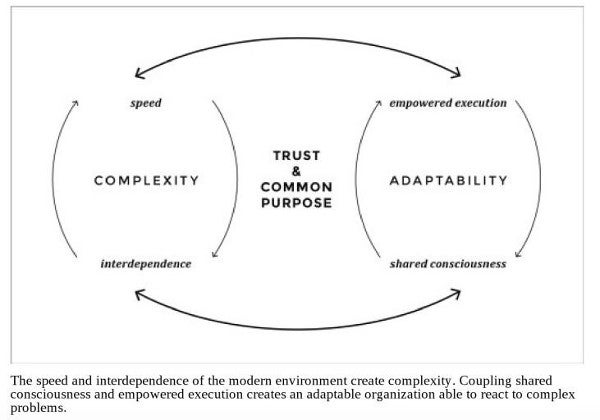
Figure 1: Reproduced from Team of Teams
The left side of the diagram depicts the current state of things: The problems we face are complex, and market demands in the age of digital transformation can change rapidly. No individual or team team can afford to operate in isolation if we have any hope of keeping pace, because we're all so interdependent.
The way through (depicted on the right of the diagram) is to continually adapt. At the size and scale most organizations operate, the way to become adaptable is for leaders to create a shared sense of consciousness so that individuals feel empowered to act on their behalf, when and where appropriate. Individual contributors shouldn't have to wait for three levels of managerial approval before working on a feature or sending out a slide deck; everyone should have all of the information, training, tools, and connections they need in order to know what to do (or what not to do) in the context of each moment to help their team and company succeed. In other words, leaders should build other leaders who can carry out their vision.
And in the center of the diagram are the words TRUST AND COMMON PURPOSE. These words are in bold for a reason. All of this is possible only with a core of genuine trust and a sense of a common purpose. A lack of one can lead to a lack of the other—and without either, you can forget about empowerment.
What do you mean, "don't need approval"?
Let's return to this sentence, which might hint at the root of some of the anxiety around empowerment initiatives: "Individual contributors shouldn't have to wait for three levels of managerial approval before working on a feature or sending out a slide deck; everyone should have all of the information, training, tools, and connections they need in order to know what to do (or what not to do) in the context of each moment to help their team and company succeed."
We see two potentially polarizing concepts here: first, that individual contributors don't need approval before publishing work (fear: employees gone wild!) and, second, that individual contributors should have access to the same information that a leader does (fear: loss of power and control!). And these fears might be valid if not for that all-important core of trust and common purpose.
Having a sense of common purpose means that your team has a clear vision (i.e., where you want to be in the future), mission (i.e., how you're going to get there), and objectives (i.e., what you're going to do). It also means that everyone has clearly defined roles and expectations so they understand which piece they are in the collective organizational puzzle and how they fit together and support each other to meet the shared objectives. Individuals empowered with all of this context won't need to ask approval for everything because they'll know what their leader and team would want them to do—direct orders from above give way to guidelines and best practices. And the leader is there to coach them if they ever veer off course.
Of course, trust enables all of this. Trust eliminates feelings of competition, especially when people clearly understand roles and expectations, and everyone is sharing information transparently. Without trust from their leaders and access to information relevant to their roles, people feel forced to spend most of their time seeking (often struggling) to find answers to questions rather than being valuable contributors to their team. And without a common purpose to rally behind, individual contributors are never able to define clear objectives—because they don't know which direction to face. From the outside, these individuals look like poor performers because they can't help realize a vision that hasn't been articulated clearly. Nobody wins.
Encouraging a mindset shift
Our conversations about management theory tend to start with explanations of modern management's origins on factory floors as means of maximizing output. As the type of work we do has shifted from mostly manual tasks (e.g., assembling widgets on the factory line) to knowledge work (e.g., building software or a website), styles of management must shift as well. After all, you can't force a knowledge worker into creating original output for a full eight hours straight five days a week—our brains just don't work that way. Knowledge workers need more support than command-and-control management styles can provide. But even in the context of knowledge work, we can't apply the exact same style of management to every individual. For example, you shouldn't hire someone fresh out of college and expect that person to understand how to translate a corporate vision into action on day one and then send them off, trusting them to figure out the best way to fill their responsibilities.
Enter situational leadership, a method for meeting individuals where they are in order to help them achieve their potential. The official "situational leadership theory" model from Paul Hersey and Ken Blanchard has received varying degrees of criticism over the years, but the basic concept remains valid: Different management styles are appropriate for different situations and different individuals. For example, someone just beginning a career might need more direct tasking than someone who's been with a company for a decade. The latter, however, might need general guidance and then generous freedom to explore different problem spaces and find ways to contribute the most value. What's important is that we encourage both managers and individual contributors to shift their mindsets in favor of empowerment.
Figure 2 shows the additive nature of activity states as an organization moves from managed to empowered.
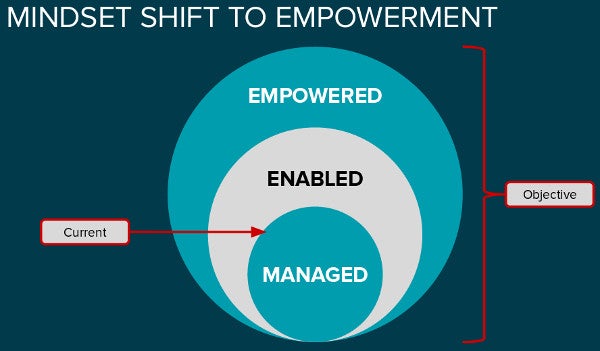
opensource.com
Figure 2: Organizational activity states from managed to empowered (courtesy of Allison Matlack CC BY-SA)
All teams are managed—whether they've stretched to empowerment or not. What changes as an organization becomes empowered is what that management looks like.
Starting out, managers supervise and direct people on a more granular task level (much like in the factories where modern management originated). Some teams—usually in organizations like sales or support—have enablement functions, which provide a central place for resources, training and development, and common messaging. In an extremely basic sense, at the level of enablement the goal is to make sure everyone has what they need to do their jobs. As the organization becomes empowered, management looks more like coaching, advocacy, and ensuring everyone understands the common purpose and how they contribute so they feel able to make decisions and act as appropriate in each moment.
Where we'd like to be is empowered: Everyone has what they need in order to do the best version of the job they were hired to do, and individuals can act more autonomously because they understand their team's common purpose and have the trust of their leader to do what they think is best in each moment. Leaders can then be free to do what they were hired to do, which is to clear blockers, set the overall vision and direction, and inspire us (and, of course, all the paperwork; bless you, managers).
Trust is the core
When we talk about empowering employees, we're not talking about giving everyone carte blanche to do whatever they want to do. Nor are we talking about flattening the organization and removing people managers. What we are talking about is making sure that everyone is in the right role for them (depending on their passions and talents and the needs of the organization); that they understand their leader's strategy and vision; and that they have access to relevant information, training, tools, and connections with different people and teams to perform the best version of that role. By setting a clear sense of purpose and clearly defining roles and expectations, leaders can then trust the experts on their teams to bring their visions to life.

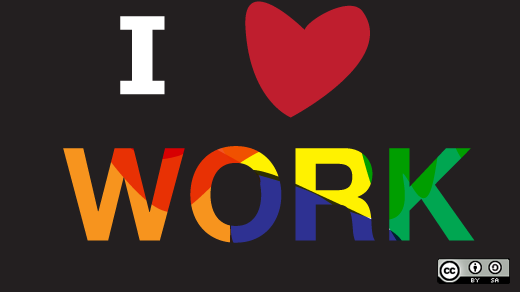
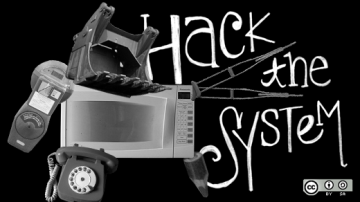
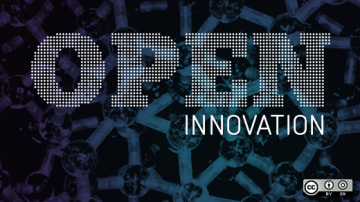




5 Comments